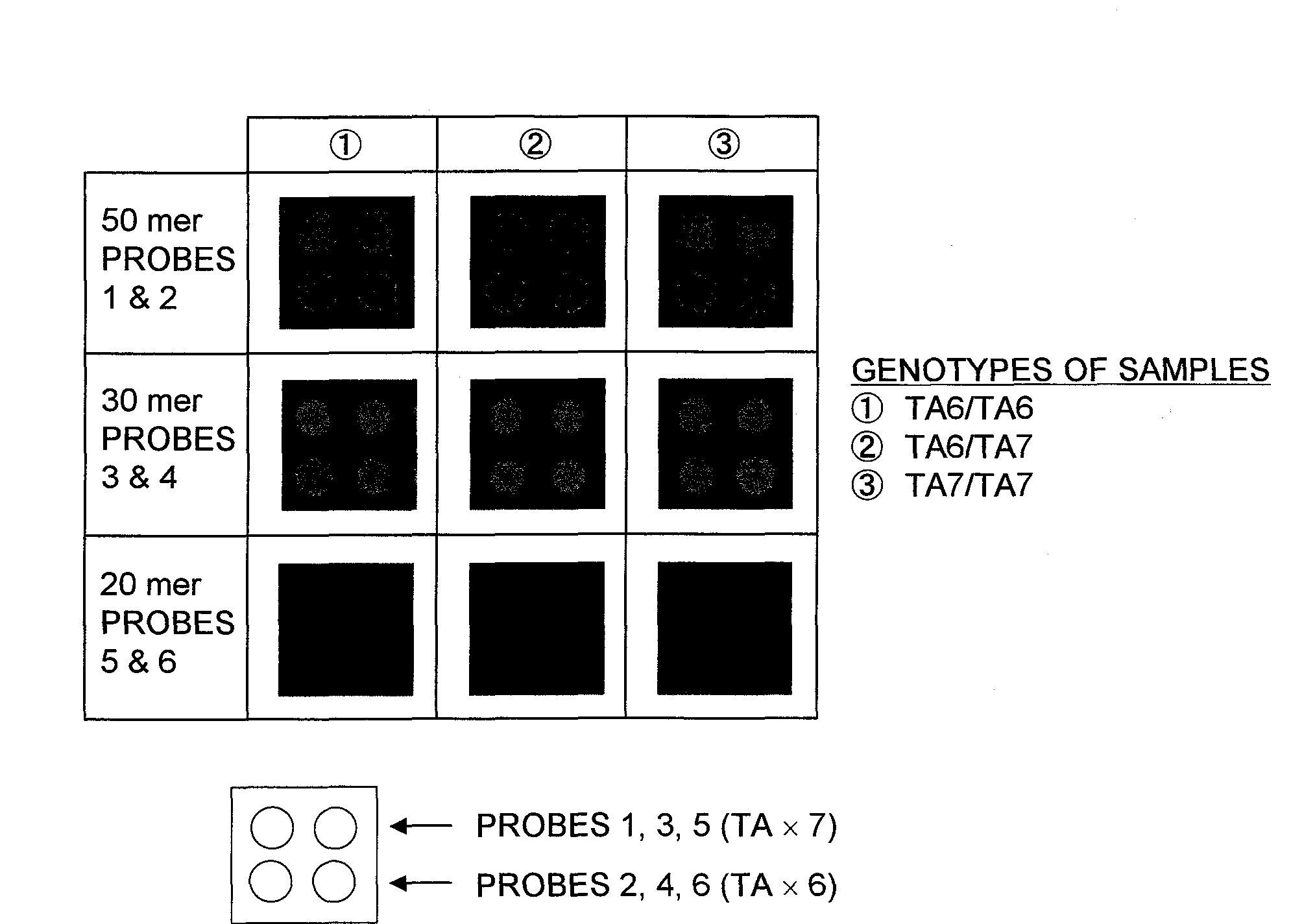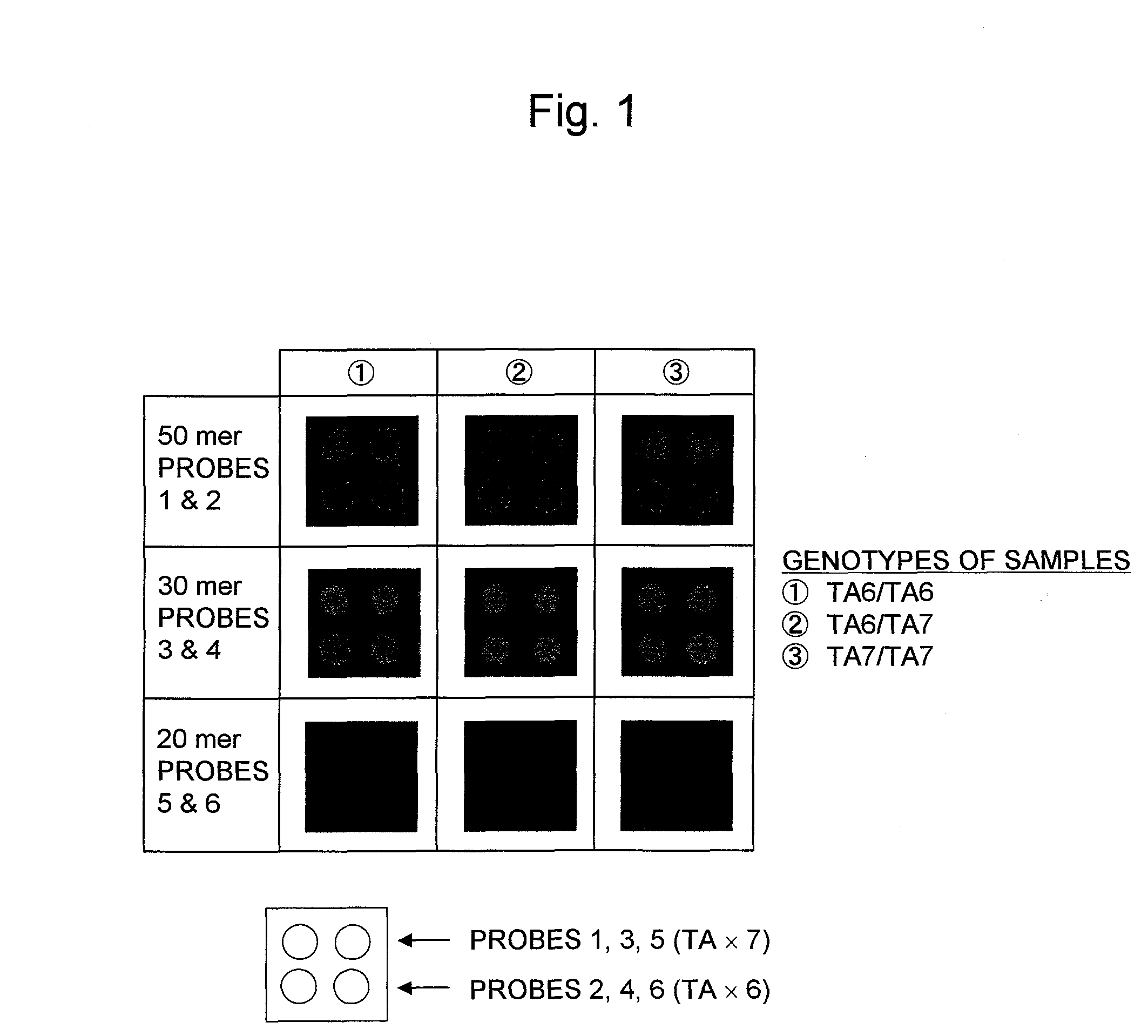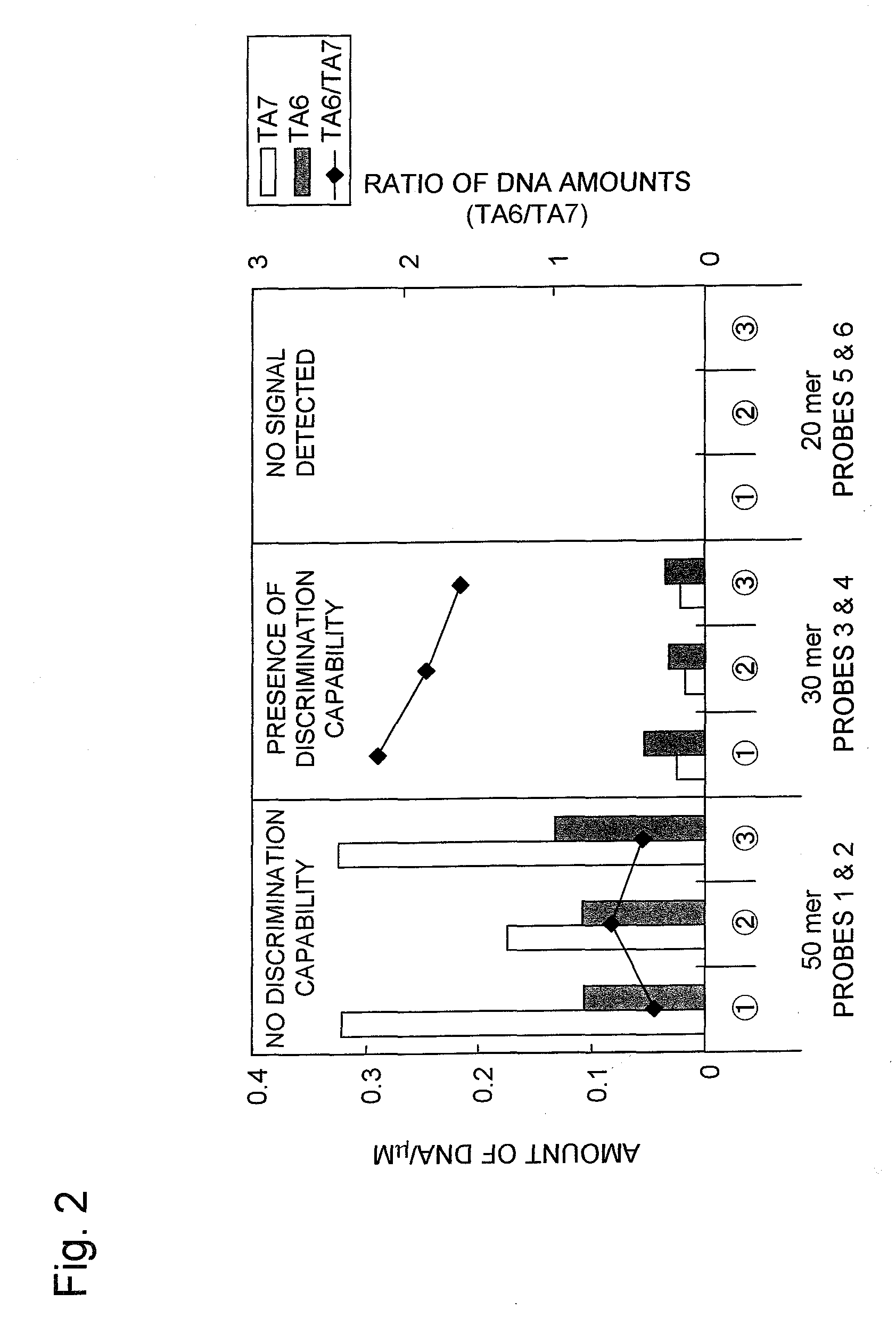Method for determining risk of adverse effect of irinotecan and kit for it
a technology of irinotecan and risk, which is applied in the direction of microorganism testing/measurement, biochemistry apparatus and processes, fermentation, etc., can solve the problems of irinotecan adverse effects, reduced ugt activity, and increased risk of serious adverse effects, so as to achieve simple and efficient means of determining risk
- Summary
- Abstract
- Description
- Claims
- Application Information
AI Technical Summary
Benefits of technology
Problems solved by technology
Method used
Image
Examples
example 1
Examination of Nucleotide Length of Nucleic Acid Probes
1-1. Manufacture of Carrier
[0106]A two-layer diamond like carbon (DLC) was formed on a 3 mm square silicon substrate by an ionized evaporation method under the conditions described hereinafter.
TABLE 1SecondFirst layerlayerRaw gasCH44.7547.5(sccm)H20.252.5(sccm)Working pressure3.08.0(Pa)Substrate biasDirect-current voltage500500(V)High frequency output100—(W)Anode voltage5050(V)FilamentVoltage77(V)Current2222(A)
[0107]An amino group was introduced to the obtained silicon substrate having a DLC layer on its surface, using ammonia plasma under the conditions described hereinafter.
TABLE 2Raw gasNH330(sccm)Working pressure8.0(Pa)Substrate biasDirect-current voltage500(V)High frequency output—(W)Anode voltage50(V)FilamentVoltage7(V)Current22(A)
[0108]A carboxyl group was subsequently introduced to the substrate by a 30-minute immersion in a solution containing 1-methyl-2-pyrolidone, 140 mM succinic anhydride and 0.1 M sodium borate. Act...
example 2
Examination of Nucleic Acid Probe Sequence
2-1. Manufacture of Microarray
[0119]A carrier consisting of a silicon substrate with a surface having a DLC layer as well as an N-hydroxysuccinimide group as a chemical modification group was manufactured in the same manner as in Step 1-1 of Example 1.
[0120]In Example 1, the 30 mer probes offered the highest accuracy in detecting the polymorphisms. For this reason, nucleic acid probes which contained the partial sequences including at least the TATA box within the promoter region of the UDP-glucuronosyl transferase gene (UGT1A1 gene) with 6 or 7 TA repeats in the TATA box, wherein each of the nucleic acid probes consisted of a 30 mer nucleotide sequence different from Probes 3 and 4 or the nucleic acid probes consisted of a nucleotide sequence complementary to the sequence of Probes 3 or 4, were synthesized.
[0121]The nucleotide sequences of the nucleic acid probes synthesized are described hereinafter.
Different Sets of 30 mer Partial Sequenc...
example 3
Examination of Repeat Sequence of Nucleic Acid Probes
3-1. Manufacture of Microarray
[0129]A carrier consisting of a silicon substrate with a surface having a DLC layer as well as N-hydroxysuccinimide group as a chemical modification group was manufactured in the same manner as in Step 1-1 of Example 1.
[0130]In Example 1, the 30 mer probes offered the highest accuracy in detecting polymorphisms. For this reason, nucleic acid probes which contained the partial sequences including at least the TATA box within the promoter region of the UDP-glucuronosyl transferase gene (UGT1A1 gene), wherein the nucleic acid probes were designed to have 8 nucleotides between the end of the TATA box and the 3′ end, wherein each of the nucleic acid probes furthermore contained 6 or 7, and 5 or 8 TA repeats in the TATA box, were synthesized.
[0131]The nucleotide sequences of nucleic acid probes synthesized are described hereinafter. Nucleotide sequences with 6 or 7 TA repeats
Probe 3 (TA x 7):5′-TTTTGCCATATA...
PUM
 Login to View More
Login to View More Abstract
Description
Claims
Application Information
 Login to View More
Login to View More - R&D
- Intellectual Property
- Life Sciences
- Materials
- Tech Scout
- Unparalleled Data Quality
- Higher Quality Content
- 60% Fewer Hallucinations
Browse by: Latest US Patents, China's latest patents, Technical Efficacy Thesaurus, Application Domain, Technology Topic, Popular Technical Reports.
© 2025 PatSnap. All rights reserved.Legal|Privacy policy|Modern Slavery Act Transparency Statement|Sitemap|About US| Contact US: help@patsnap.com



